RCADE Battle Simulator "Moneyballs" Virtual Fights With Unmanned Platforms
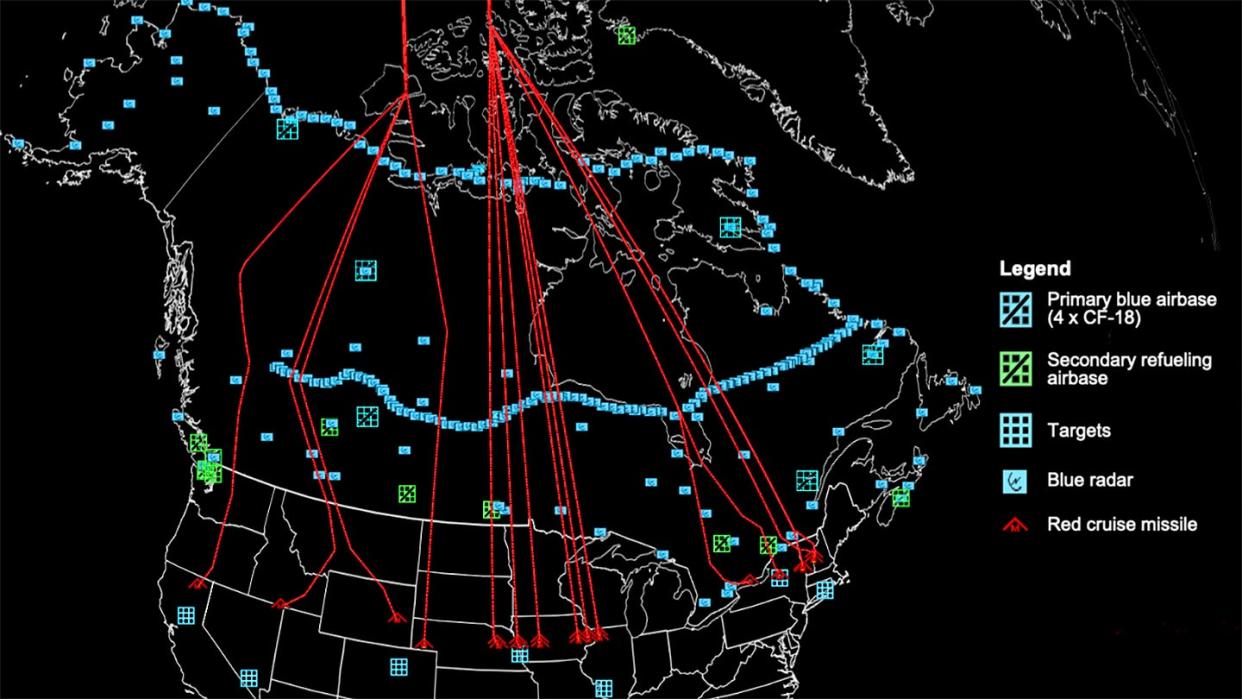
Picture this: NATO radars detect a wave of Russian heavy bombers armed with cruise missiles in the North American Air Defense Identification Zone, or ADIZ, near the North Pole. The defense objective is clear: take out the bombers before they can launch cruise missiles bound for seven targets deep within the United States. The first line of defense consists of Canadian CF-18 Hornets scrambled from air bases as the hostile aircraft approach the Defense Early Warning Line (DEW line) that stitches its way across Canada’s northern reaches.
From here, it's grim arithmetic: how many cruise missiles can get through the Hornets' defenses and the American fighters beyond them, leaving their targets vulnerable? How many allied fighters are lost to adversary escort fighters even in a successful rout? And how does the game change if, for example, the Air Force's Agile Combat Employment framework allows for the launch of defensive military aircraft from airfields closer to the threat?
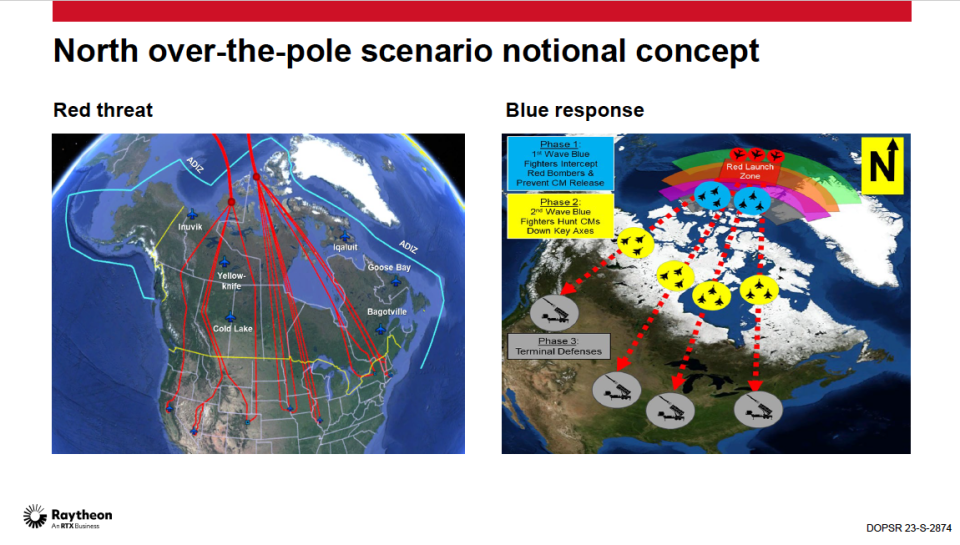
This is a problem set made for RCADE, a sophisticated modeling and simulation program designed by the parent company of Raytheon and Collins Aerospace, RTX. Named for its game-like quality (its full name, Rapid Campaign Analysis and Demonstration Environment, followed as a backronym), RCADE has been in development by the company since 2016, but is now "hitting its stride," said George Blaha, an RTX principal tech fellow. Highly customizable and encompassing all warfighting domains from undersea to space, RCADE is also an order of magnitude faster at running simulations and generating reports on the outcome than its near competitors, Blaha claimed.
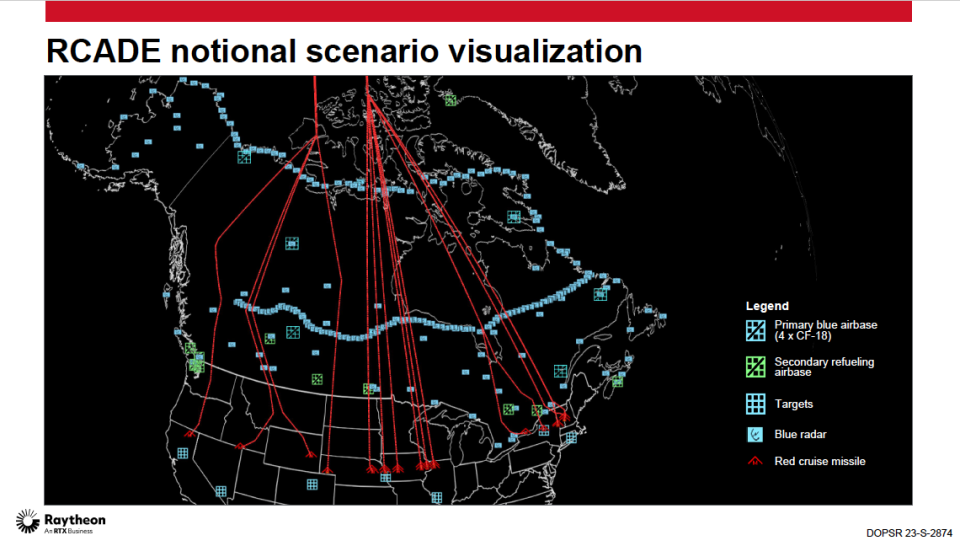
RTX says it doesn't lease or sell RCADE to its military customers; rather, it uses the simulations it generates to inform clients' knowledge of capability gaps and warfighting needs that the company might be able to meet with other products. It also offers the software's capabilities to institutions such as Army Futures Command and the Naval War College through Cooperative Research and Development Agreements.
"The last thing we want to do is provide a solution that's looking for a problem, right?" Paul Ferraro, RTX's president for Airpower, said. "We want to understand the problem first, understand our gaps in addressing that problem, and then develop requirements that would help close that gap."
A demonstration slide provided by RTX shows a possible simulation report: a scatter chart showing results from 300 runs of the same over-the-pole attack scenario, including changes resulting from altering variables including ACE basing, speed, range and number of anti-aircraft assets; command-and-control-architecture; and number of over-the-horizon radars. Equipped with this information, commanders could, in theory, shore up their operating environment ahead of an attack and confidently choose a course of action in the event of one to ensure the greatest probability of victory.
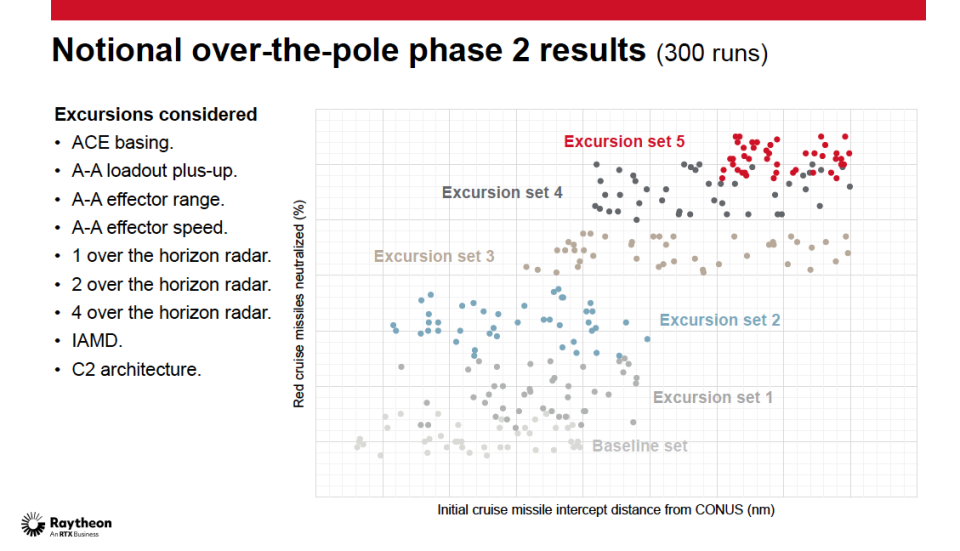
The company invited reporters to an RCADE demonstration on August 31, highlighting a program that has had little public exposure for years. This is at least in part because new unmanned platforms set to play a major role in future battle spaces make it easier to play "Moneyball" with combat variables, to use Blaha's analogy. That is to say, battlefield commanders can be much more clear-eyed and direct in their discussions of how many assets they can afford to lose — and still achieve a win in various combat scenarios — when they're merely talking about platforms, and not people inside of them.
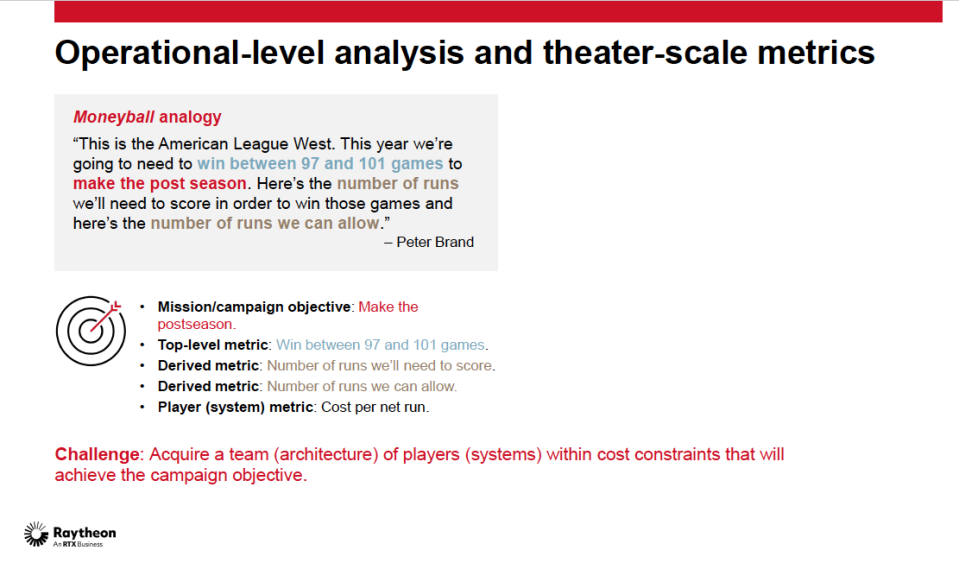
Loyal wingman drones, or what the Air Force is now calling Collaborative Combat Aircraft (CCAs), introduce "a very different element of your overall architecture," Ferraro said, and more possible ways to the goal of meaningful strategic victory.
"How would you use, I'll say your higher-valued assets, meaning the manned aircraft, versus what may be attritable to a certain degree. When you look at a cost-exchange ratio, how many can you lose and consider that a victory from the mission objective standpoint. [RCADE] allows you to run those different excursions," Ferraro said. "So when the threat is markedly changing and the approach to combating that threat is markedly changing, this gives you a tool, a way of objectively analyzing various architectures, various ways of engaging this evolving mission set."
RCADE's speed, Blaha said, comes thanks to its pure Python software language and advanced modeling architectures. Whereas the Air Force's Synthetic Theater Operations Research Model, or STORM, might take nine months to develop a specific campaign study, RCADE can do the same work in two months or less, he said, completing millions of virtual scenario run-throughs and rapidly turning out the results of that data into usable insights for the prospective consumer.
"I think part of it is that maybe we were a little late to the game on this," Blaha said, comparing RCADE to the two-decade-old STORM. "And so we were able to jump right in the front of the line, so to speak, and use the latest stuff."
The data that informs RCADE's reports comes from government reference documents, playbooks, and adversary studies and reports. Company executives say comparisons between modeling and repeatable real-world scenarios, like flight tests, prove out the accuracy of RCADE's source data.
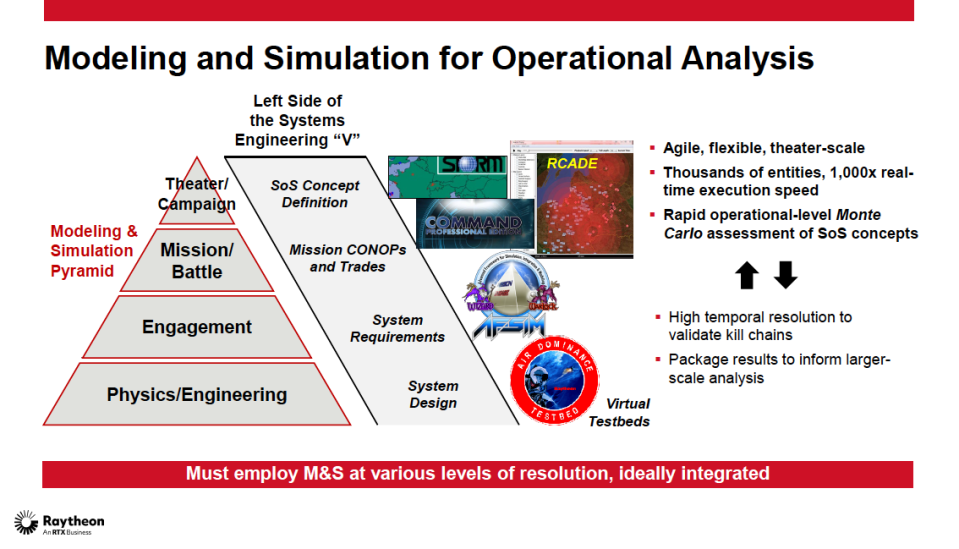
That's not to say that all domains are created equal. RCADE, which originated as a tool focused on the undersea domain, is "not as deep as [it] could be" in the space domain, Ferraro acknowledged, saying government partners have typically provided their own space analysis.
RCADE took shape through DARPA's Cross-Domain Maritime Surveillance and Targeting (CDMaST) program, which gamed out various combinations of manned and unmanned submarines and surface platforms "to deny ocean environments to adversaries as a means of projecting power."
In 2018, Raytheon won a contract worth up to $30 million to support the program, and in 2021, the company completed a three-week demonstration of the CDMaST warfighting concept, using a hybrid live and virtual test bed to demonstrate a series of anti-submarine and anti-surface warfare scenarios, using RCADE as the base modeling and simulation technology. For the company, the success story of CDMaSt was achieving a theater-level collaborative analysis of a problem set in a way that created multiple options for a battlespace commander to achieve tactical objectives and respond with speed and flexibility to changing conditions.
The company began to build out the air domain portion of RCADE in 2019, Blaha said, adding that the complex behaviors of the entities that compose the battlespace, from aircraft to missiles, made the effort a six- to eight-month undertaking.
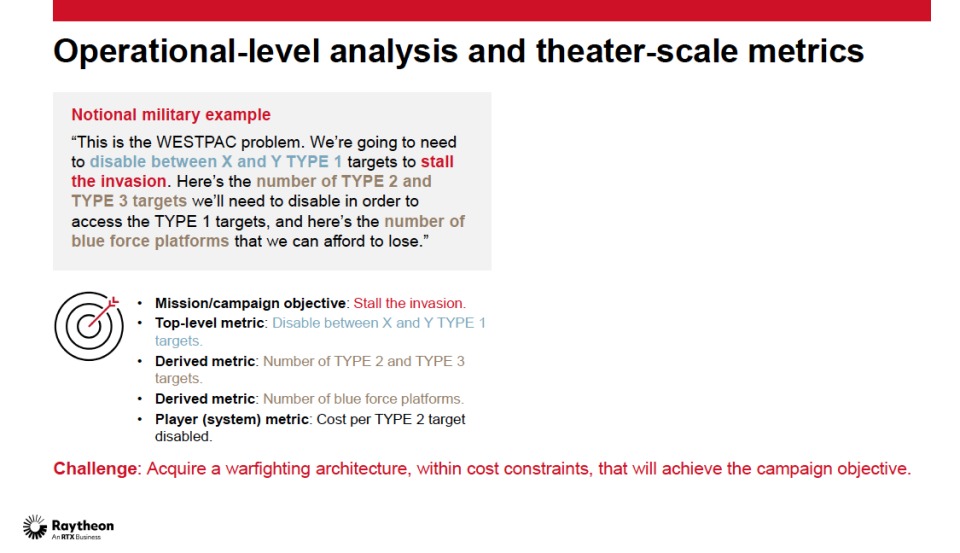
Another area in which RCADE will continue to build is artificial intelligence and machine learning, which could increase the program's ability to generate employment options for commanders, or even, someday, create master attack plans that maximize available assets and strengths. The prospect of using AI to strengthen battle simulations has spawned a number of military-led initiatives already. In 2020, DARPA published a solicitation for the COnstructive Machine-learning Battles with Adversary Tactics (COMBAT) project, which aimed to use AI algorithms to simulate enemy forces and their responses to friendly-force maneuvers. In 2019, the Air Force Research Lab called on industry for help applying AI/ML to air battle management to make faster and better-informed decisions in the heat of combat. The Aegis combat system, as one example, already uses advanced software to help automate its functionality, provide recommendations to users, and can even prioritize and engage targets on its own.
In the commercial and military markets alike, digital simulation tools, aided by AI/ML, are developing rapidly. Making 'digital twins' of future and existing platform designs and putting those models into a larger simulation environment is being used not only to reduce developmental risk, cost, and timelines, but also to better understand what the platforms could be capable of in increasingly complex simulated combat scenarios. This is especially true when it comes to how they can interact with other assets, both friendly and enemy.
Blaha warned, though, that efforts to build AI computing into RCADE would be incremental and deliberate.
"For a theater-scale problem, the dimensional space is huge, and what knobs are you going to allow the AI to turn?" he said. "Let's just pick a piece of the battle, where we're going to limit the number of variables to a couple dozen."
Ship self-defense, he said, is one example of a confined problem set with a manageable number of variables for an AI algorithm to ingest and generate reliable conclusions. But today's limitations, he added, are not likely to remain in place for long as the technology advances. Eventually, he said, theater-scale AI applications are going to be a reality.
"RCADE would be one of our sims that we could train on," Blaha said, "to train an AI agent that could think about the whole theater."
Contact the editor: tyler@thedrive.com

